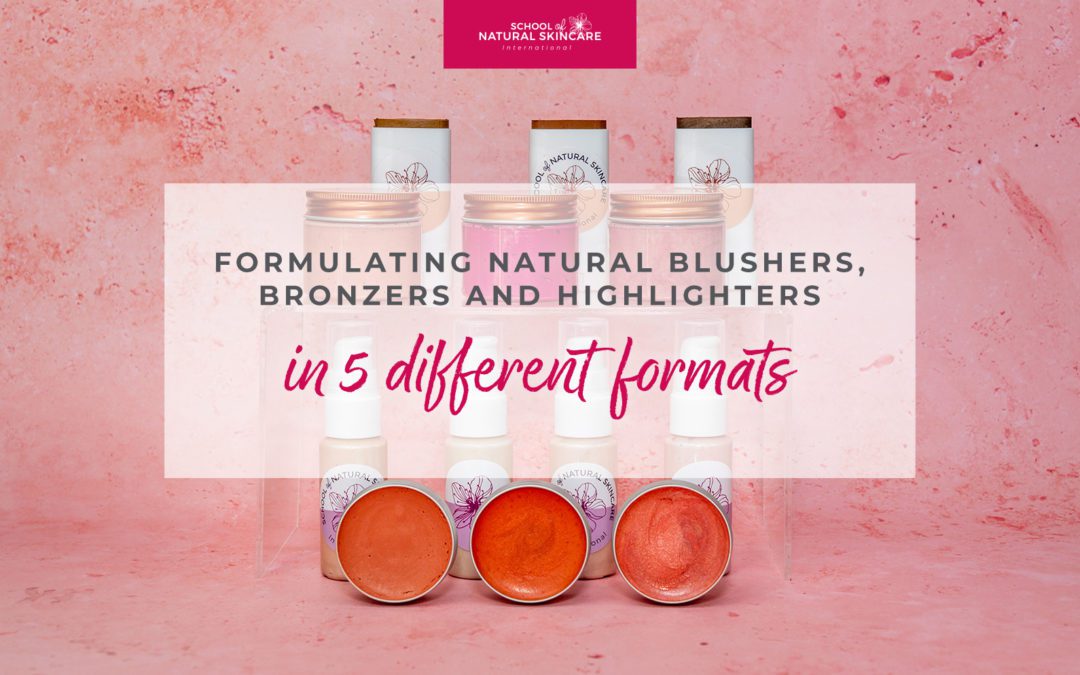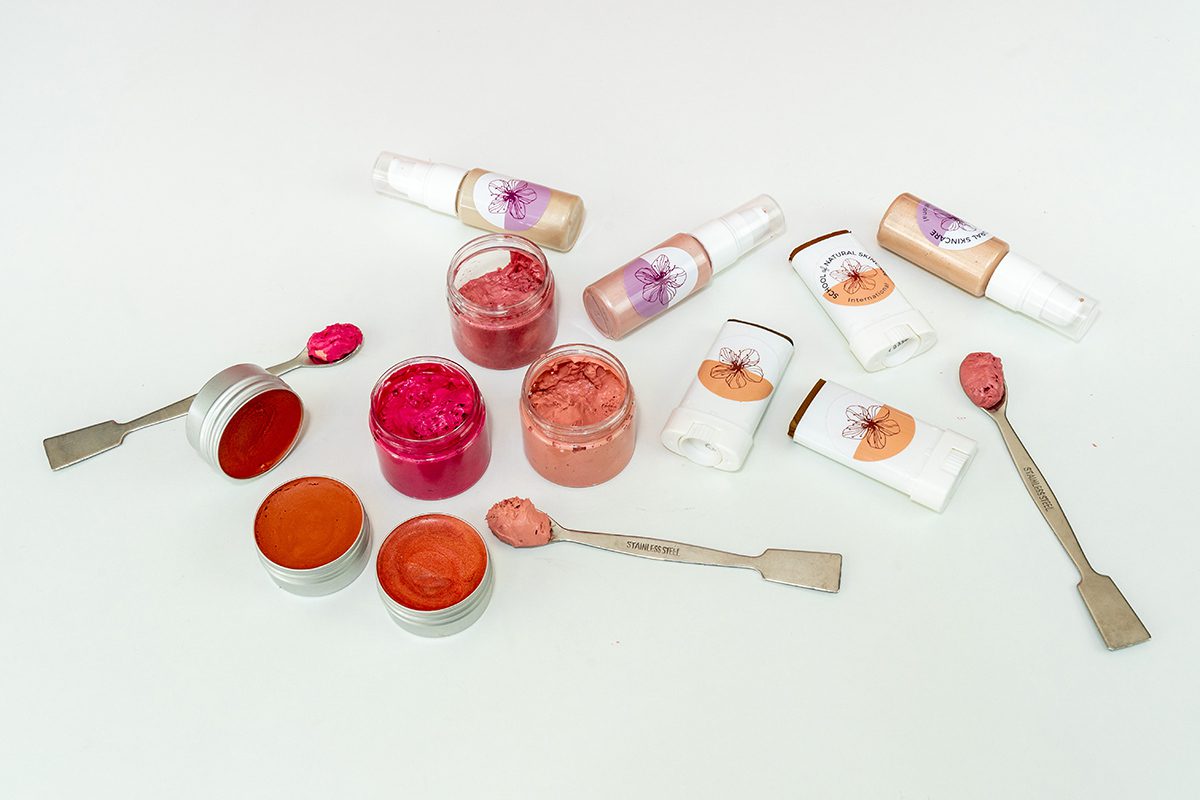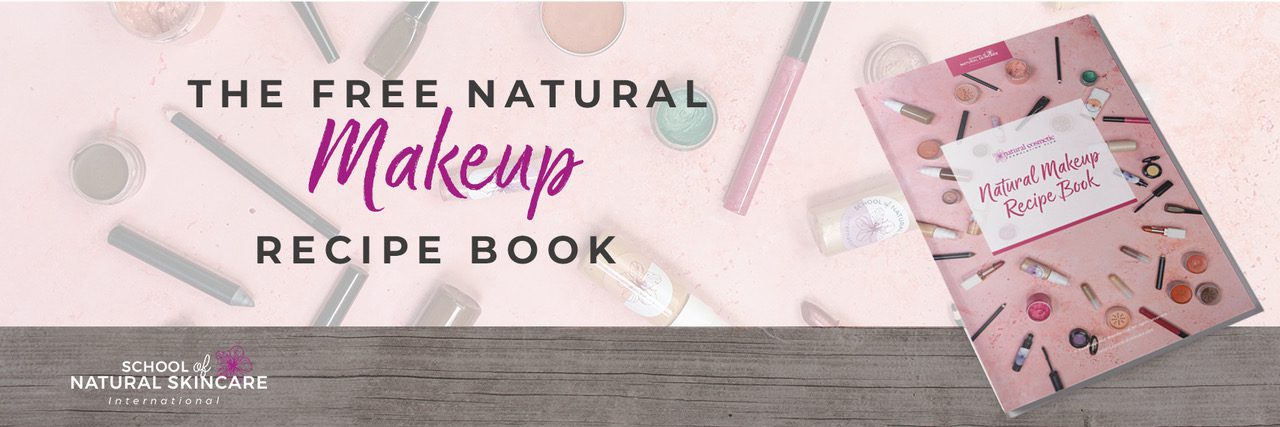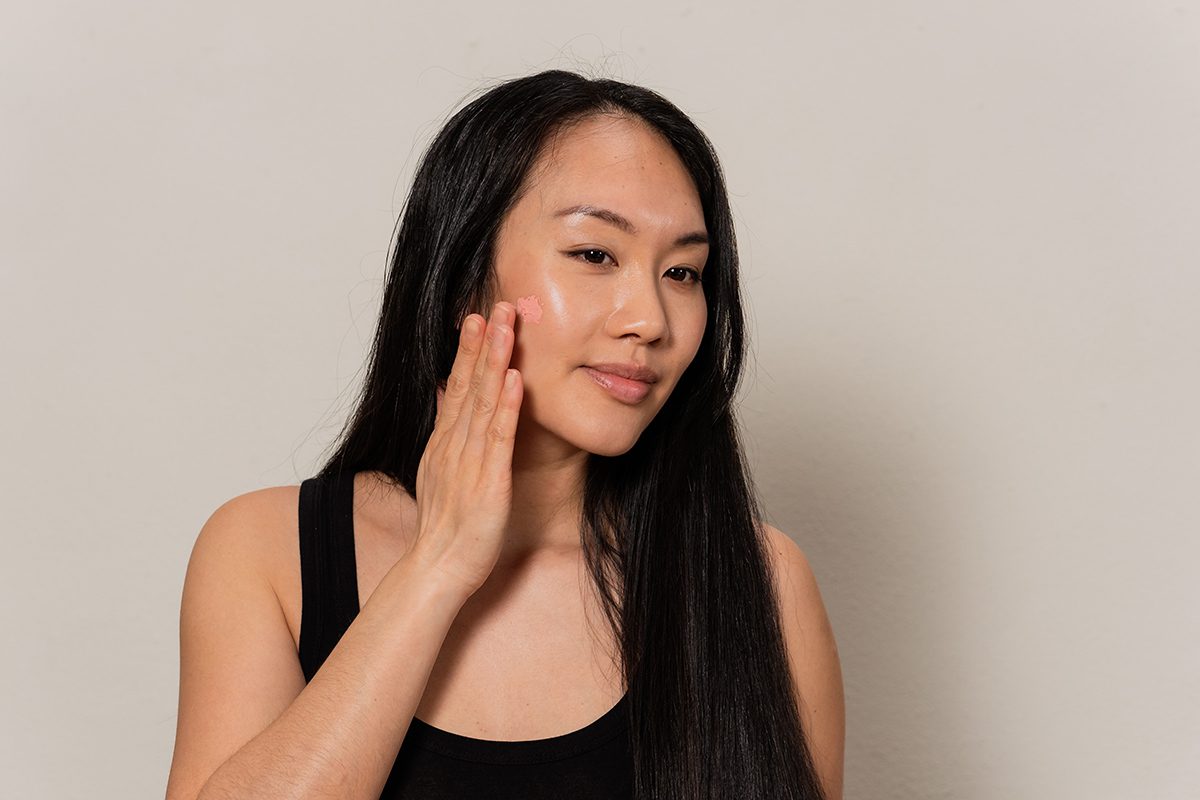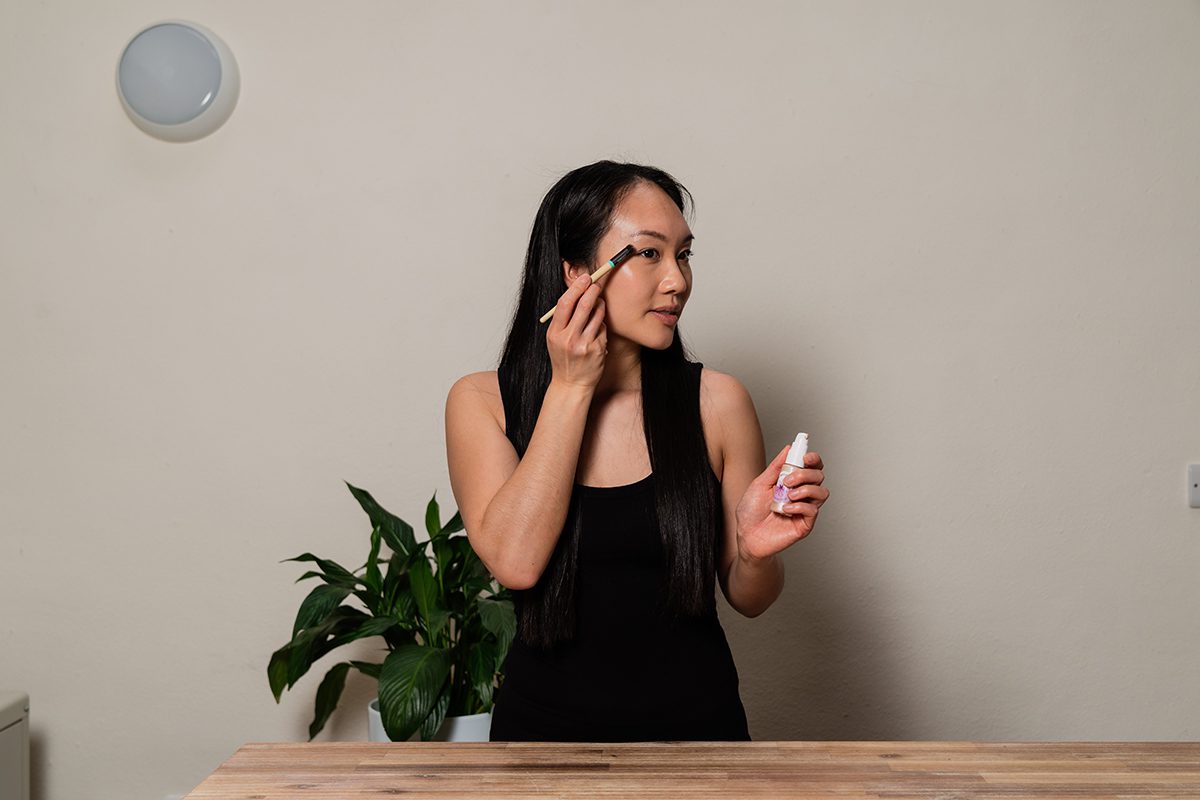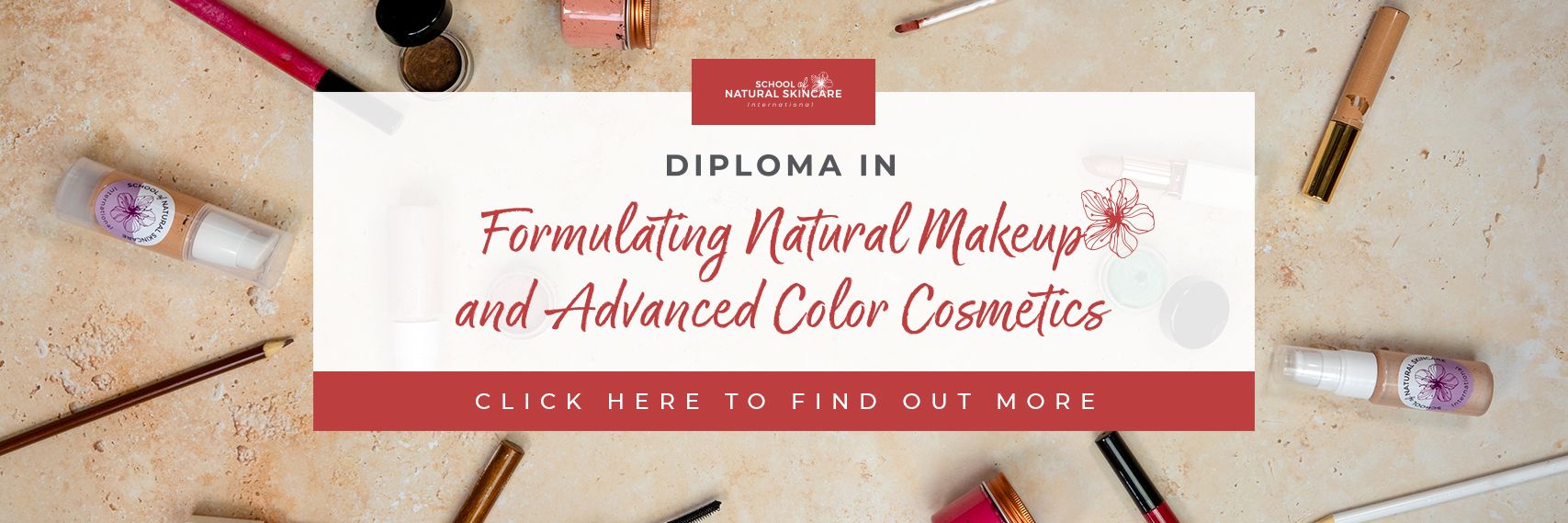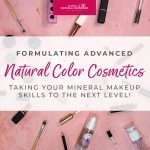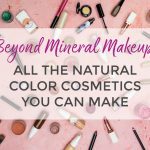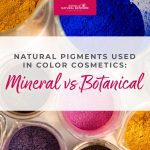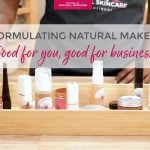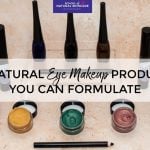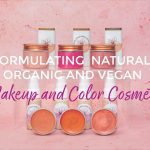Formulating natural blushers, bronzers and highlighters is a personal favorite of ours as there are so many beautiful shades and formats to create.
Plus, of course, we love products that add a touch of natural-looking color and create a healthy, fresh, sun-kissed or dewy appearance!
When formulating blushers, bronzers and highlighters there is a lot to experiment with: formats, textures, shades and finishes (matte or shimmery). They are fun to make and easy to apply.Here’s the low-down on the blushers, bronzers and highlighters you can formulate. For more help and guidance check out our exciting Diploma in Formulating Natural Makeup and Advanced Color Cosmetics.
Enhance your natural beauty with blushers, bronzers and highlighters
Blushers
Blusher is used to add natural-looking color to the cheeks. They usually come in different tones of red – from light pink, through to peach, all the way to deep red colors. They create an impression of flushed cheeks and a fresh, bright appearance and can be matte, satin or shimmery. Blushers are usually applied to the apples of the cheeks.
Bronzers
Bronzers are used to create a bronzed look on the skin. They give the skin a lovely, sun-kissed glowy appearance and somewhat mimic a tanning effect on the skin. They are usually applied to areas where sun naturally hits our face – cheeks, the bridge of the nose and on the top of the forehead. Most bronzers have some amount of shimmer in them, for that glowy finish, but matte bronzers also exist and are especially useful for oily skin.
Highlighters
Highlighters are used to create the appearance of a healthy, dewy glow on the face. They create a fresh, radiant look by containing ingredients that reflect light, such as shimmery micas. They brighten up a dull complexion and also enhance facial features. They are usually applied to the areas we want to make stand out more, for example the top of the cheeks, temples and brow bone.
The 5 different types of blusher, bronzer and highlighter you can formulate
Each of these three products can come in different formats. It’s possible to make each of these formats at home with regular cosmetic-making equipment.
1) Powdered blushers, bronzers and highlighters
Blushers, bronzers and highlighters often come in the form of powders, most commonly pressed powders, but also loose powders. Powdered products are easy to use over foundation as they do not require rubbing, which can disturb the pigments already on the skin. They are also a popular choice for people with very oily skin, since they have a slight mattifying effect.
2) Cream blushers, bronzers and highlighters
Cream products are most commonly oil-based anhydrous balms with a very soft, almost creamy structure. They are usually applied with fingertips, but can also be used with large facial brushes or with makeup sponges.
Natural versions use lightweight oils or esters to carry the pigments and a variety of different lipid thickeners – their types and amount will affect the consistency of the finished product. It is important to ensure the consistency is optimal for easy application; the product needs to melt and soften on the skin, so it can be blended onto the skin easily.
Cream products often contain dry insoluble powders, which minimize the oily skin feel and create a light, powdery finish.
3) Stick blushers, bronzers and highlighters
Stick products are solid, balm-like products that come in the form of anhydrous balms with a solid consistency. Because of the high percentage of lipid thickeners, they normally also contain powdered, absorbing ingredients that lower the greasiness of the product on the skin.
They are normally applied straight from the stick container and then rubbed in or blended using fingertips, brushes or a makeup sponge.
They can work well as multipurpose products that can be applied to the lips and even eyelids, too, in addition to being used as blushers or bronzers.
4) Liquid blushers, bronzers and highlighters
Liquid products are usually very low viscosity emulsions, so they can be packaged into a bottle with a lotion pump or a pipette. Due to the presence of insoluble pigments, the product needs to suspend the pigments so they do not settle to the bottom. In the case of very fluid emulsions, aqueous thickeners are used to suspend the particles.
Emulsion-based liquid blushers, bronzers and highlighters contain a small oil phase that is usually made of light emollients, a water phase and emulsifier. It is important to use emulsifiers that are capable of making low viscosity emulsions.
5) Mousse blushers, bronzers and highlighters
Mousse products are emulsions with a high viscosity which are whipped to give them a light, airy texture. While they function a lot like cream or liquid products, they have a different sensory experience due to the fluffy nature of the product.
Depending on the size and composition of the oil phase, mousses can be very light and non-greasy (better suited to oily skin) or more nourishing and moisturizing (being better suited to dry skin).
Mousse products are normally packaged in jars and then applied as a cream, with fingertips. The product can then be blended onto the skin with fingers or a makeup brush.
Want expert guidance on formulating your own natural blushers, bronzers and highlighters?
Our Diploma in Formulating Natural Makeup and Advanced Color Cosmetics contains two modules dedicated to teaching you to formulate natural blushers, bronzers and highlighters.
Module 4: Mineral Blushers, Bronzers and Highlighters covers powdered products and Module 9: Advanced Blushers, Bronzers and Highlighters covers stick, cream, mousse and liquid products!
In each module, you’ll receive:
- Ready-to-use formulations to practice with.
- Templates and guidelines for formulating your own unique products.
- Detailed ingredient information so you know what to use and why.
- Beautiful textbooks to download.
- Step-by-step video demonstrations.
- Support from professional Cosmetic Scientists.
If you’d like to create your own natural makeup and color cosmetic products, either for yourself or to sell, and have a huge amount of fun at the same time, you’ll want to join our Diploma in Formulating Natural Makeup and Advanced Color Cosmetics.
If you are a member of our Natural Cosmetic Formulation Club, then take a look at the course’s dashboard for more information on how to access this module and start your journey with Advanced Blushers, Bronzers and Highlighters!

